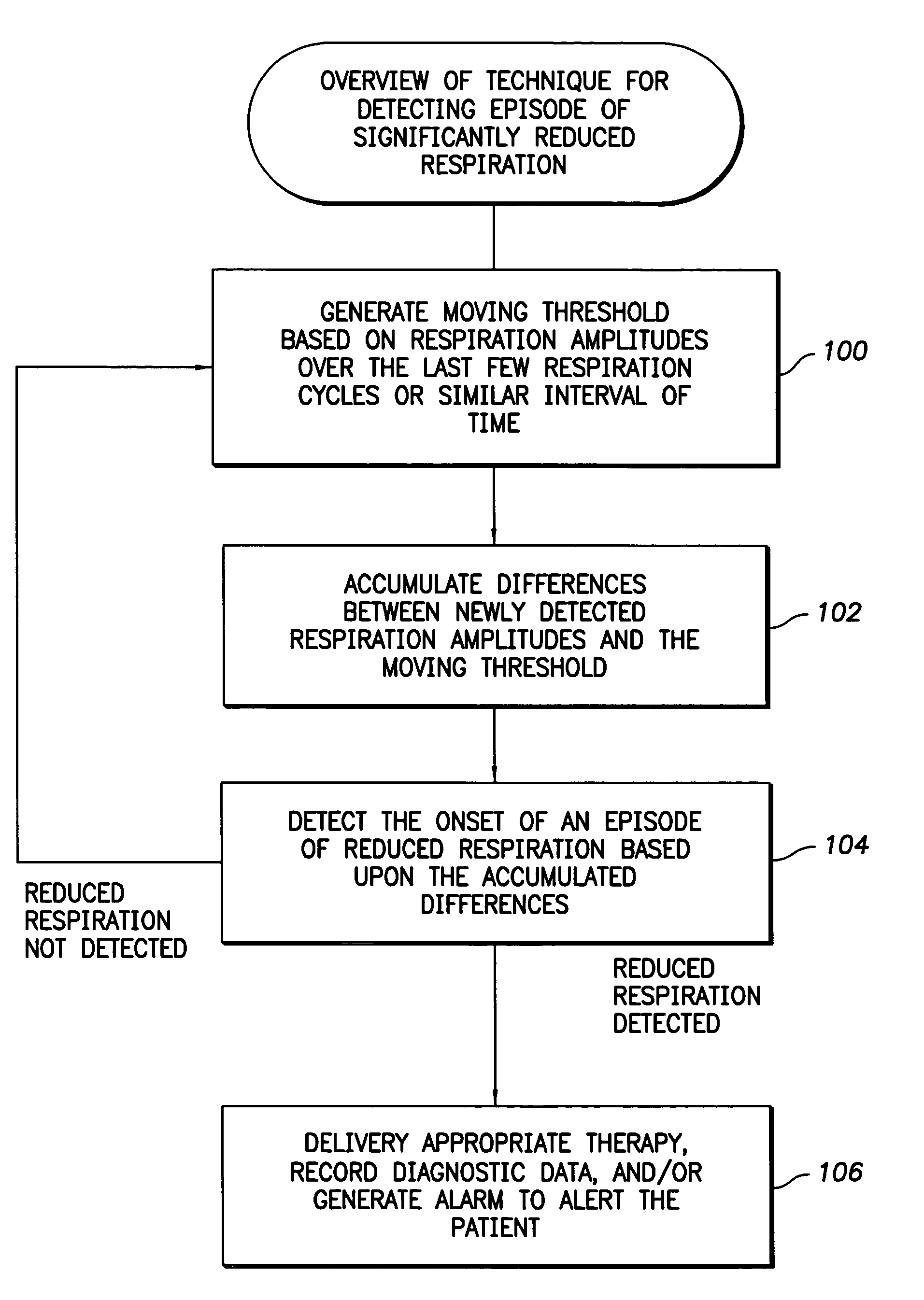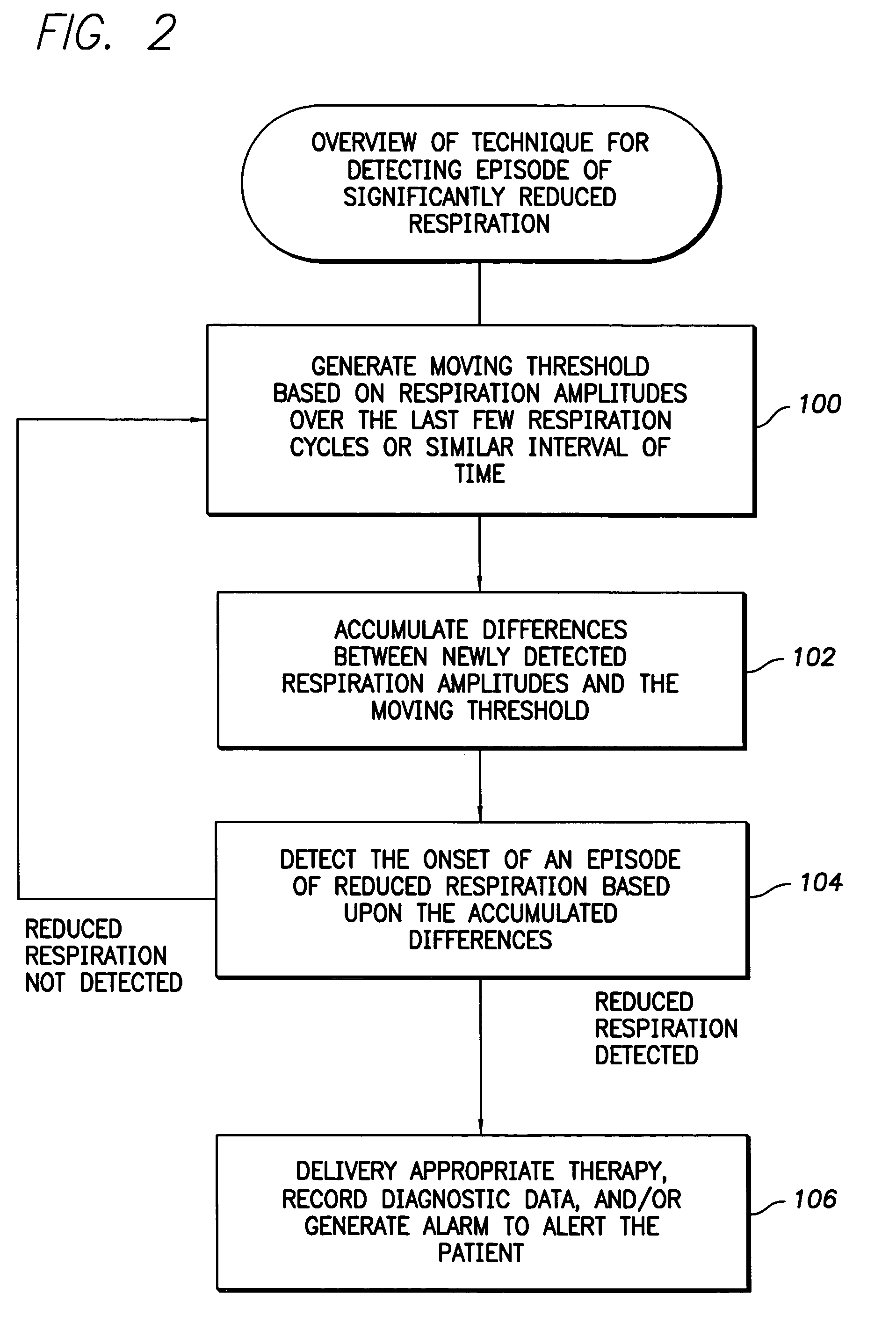System and method for real-time apnea/hypopnea detection using an implantable medical system
a medical system and real-time apnea technology, applied in the field of implantable medical devices, can solve the problems of preventing patients from achieving rapid eye movement, aberrant blood chemistry levels caused by sleep apnea, and insufficient generation of nerve signals during extended periods of time, so as to reduce respiration
- Summary
- Abstract
- Description
- Claims
- Application Information
AI Technical Summary
Benefits of technology
Problems solved by technology
Method used
Image
Examples
Embodiment Construction
[0031]The following description includes the best mode presently contemplated. This description is not to be taken in a limiting sense but is made merely to describe general principles of the illustrative embodiments. The scope of the invention should be ascertained with reference to the issued claims. In the description that follows, like numerals or reference designators are used to refer to like parts or elements throughout.
[0032]Overview of Implantable Apnea / Hypopnea Responsive System
[0033]FIG. 1 illustrates an implantable apnea / hypopnea responsive medical system 8 capable of detecting individual episodes of substantially reduced respiration and delivering appropriate therapy. Apnea / hypopnea responsive system 8 includes a pacer / ICD 10 or other cardiac stimulation device that incorporates internal components (shown in FIGS. 5 and 6) for detecting apnea / hypopnea and controlling delivery of therapy in response thereto. To this end, pacer / ICD 10 receives impedance signals from vario...
PUM
 Login to View More
Login to View More Abstract
Description
Claims
Application Information
 Login to View More
Login to View More - R&D
- Intellectual Property
- Life Sciences
- Materials
- Tech Scout
- Unparalleled Data Quality
- Higher Quality Content
- 60% Fewer Hallucinations
Browse by: Latest US Patents, China's latest patents, Technical Efficacy Thesaurus, Application Domain, Technology Topic, Popular Technical Reports.
© 2025 PatSnap. All rights reserved.Legal|Privacy policy|Modern Slavery Act Transparency Statement|Sitemap|About US| Contact US: help@patsnap.com



